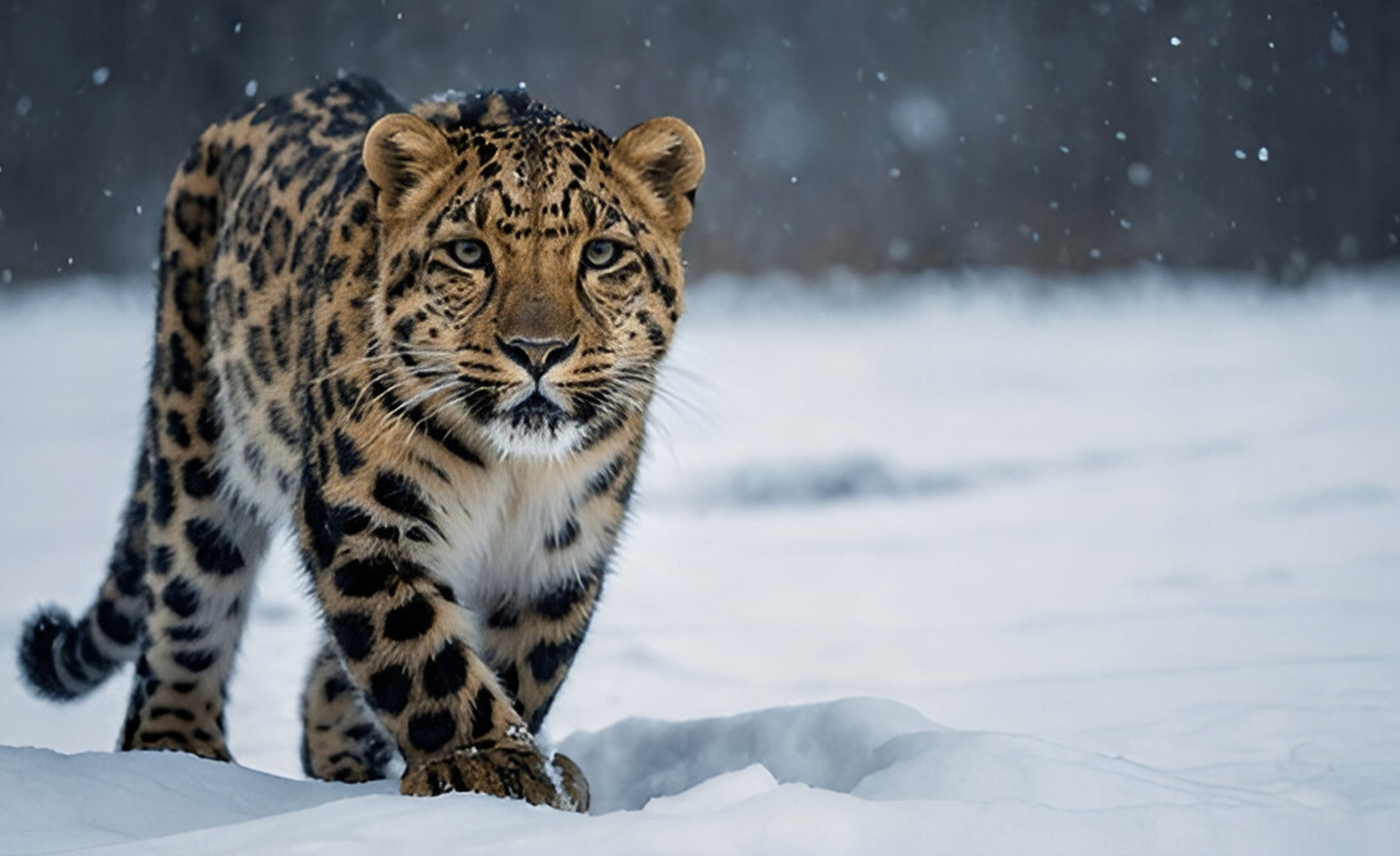
Help Save Wildlife: Why the Amur Leopard Desperately Needs Us Now
Humanity is awakening to the need to help save wildlife and no creature fits as much as the Amur Leopard to represent this crisis. Found only in Russia and China in the far east, this shadowy big cat is one of the rarest creatures. With fewer than a hundred known in the wild, it poses a somewhat uncomfortable question: Again, is it what happens if we do not act fast enough?
The blog explores why the survival of the Amur Leopard matters, how this issue of survival is tied to bigger wildlife conservation efforts and what members of humanity can do to protect wildlife and raise animal extinction awareness. This Amur Leopard is more than just an animal — it is a cry for help for all the endangered species.
Table of Contents
Meet the Amur Leopard: A Vanishing Ghost
The Amur Leopard (Panthera pardus orientalis) is famous for its beautiful spotted coat and even adaptability to cold climate conditions. But while being hardy, the species has been hugely impacted by habitat loss, poaching, and low genetic diversity.
Just a few points of why it does matter:
- In the wild today, a mere 100 Amur Leopards exist.
- They are considered by the IUCN to be Critically Endangered species.
- Their natural habitat — the temperate forests of the Russian Far East — is vanishing fast.
Saving the Amur Leopard from extinction would mean saving just one species, but there lies the true test of whether we can help save wildlife around the world, before it’s too late.
Why This Isn’t Just About One Species
In a wider context, protecting the Amur Leopard has the advantage of contributing to its general ecosystem. In the survival of any singular species, we are also:
- Keeping forests and rivers in the area of its habitat.
- Maintaining prey populations such as roe deer and hares.
- Halted illegal wildlife trade and poaching activities.
Hence, international wildlife conservation organizations should band together to protect this species.
The Key Threats to Their Survival
Knowing the Amur Leopards are on the verge of extinction, why would we facilitate the challenge in the effort to protect wildlife in general?
Some of the major threats involve:
- Deforestation: Logging, mining, and agricultural expansion destroy the habitat of the Leopard.
- Poaching: Leopards are hunted; so are their prey, which means the animals die of starvation.
- Climate Change: Warmer winters and irregular weather patterns affect the reproductive cycles.
- Inbreeding: Being small in population size, it causes genetic weakness and issues regarding health.
Each of these problems links to other global challenges faced by endangered species, which makes it all the more imperative to act fast.
What Is Being Done: Conservation in Action
Governments, NGOs, and grassroots organizations from around the world are trying to save the Amur Leopard. Major steps include:
- Creating protected reserves such as ‘Land of the Leopard National Park’ in Russia.
- Use of camera traps to monitor individual animals and protect them from poaching.
- Captive breeding programs to increase genetic diversity.
- Cross-border cooperation between Russia and China for habitat connectivity.
If wildlife conservation can be started in time, such actions are well on their way to reversing extinction trends.

How You Can Help Save the Amur Leopard
If you’re not a scientist or conservationist, you too can stand with the solution. Small steps make a huge change. Here’s how you can help:
- Donate to worldwide conservation organizations.
- Symbolic kind of adoption of an Amur Leopard through wildlife foundations.
- Spread stories online to raise animal extinction awareness.
- Support sustainable brands that do not jeopardize leopard habitats.
- Volunteer or fundraise for activities that help save wildlife.
Every voice counts. Every action matters.
Lessons from the Brink of Extinction
The Amur Leopard teaches us that endangered species cannot be an afterthought. Once the number is too small, transplantation back is a tougher job.
However, this fight sustains hope.
If humanity has brought species to the edge, it can and must draw them back. Animal extinction awareness would therefore be first, followed by an inclination to protect wildlife and the funding of real-world actions.
Let’s not wait for another tragic story to take action.
Last Words of Encouragement
The Amur Leopard’s story isn’t finished, not by a long shot. But time is running out. If we desire a world where snow leopards roam the remote highlands and biodiversity thrives, then we must help save wildlife today.
You don’t have to be a conservation biologist. What you do need is the bravery of concern and the action to follow through.
So, let this beautiful species inspire you — be the cause a breed survives the edge! Speak for the speechless. Set out to save animals and save the world.
Frequently Asked Questions (FAQ)
Q1: How does it come about that the Amur Leopard is endangered?
A: One of several reasons causing its critical endangerment is habitat loss; other factors are poaching, climate change, and inbreeding. Less than 100 animals remain in the wild.
Q2: How does saving the Amur Leopard help the ecosystem?
A: Being a top predator, its conservation saves the whole ecosystem, including the forests, rivers, and other species.
Q3: Can regular folks make a difference?
A: Yes. Everyone can spread awareness of animal extinction, donate to charities, avoid buying unsustainable products, and speak out and by doing that, anyone can help save endangered animals.
Q4: Were there any promising conservation stories related to Amur leopards?
A: Yes. Russia set up the “Land of the Leopard” national park, and cross-border cooperation with China is showing promising signs of recovery.
